Lanza Musto Vineyards – Cabernet Clone Descriptions
Cabernet 169: The Cabernet 169 clone is a French clone that. The first 169 clone to come to the US was planted by UC Davis in 2003. Since then, it has been gaining popularity in all the major Cabernet growing regions. Especially in on Mount Veeder. It has good berry size, high vigor, and a well-balanced acid to sugar ratio. The wine can be higher in alcohol depending on the winemaking style. It was created to produce a big and bold Cabernet with intense complexity. The color is a vibrant, deep red. The mouth feel tends to be bold and linger. This grape is definitely for the adventurous winemaker. (selling out as we speak)
Koch Cabernet: The Koch ranch Cabernet is farmed on incredibly rocky soil. The soil absorbs most of the moisture therefore producing a more intense fruit. This is only 8 acres, so please reserve your cases as soon as possible. We always sell out of the Koch Cabernet. (selling out as we speak)
Cabernet 15: This Cabernet Clone originates from Aquitcuine, France (South East France, Bordeaux, largest grape region in France). It is known for its high yield, high levels of Anthocyanins (attributes to aging and color), and high tannins. The wines are described as having raspberry, cherry, plum, and cocoa notes. It has an intense body and is structurally solid. Definitely an age worthy Cabernet.
Cabernet 8: The Clone 8 Cabernet Clone was one of the most popular plantings in France and then in the US in the 1990’s. From our research, it has been said that it was one of the plantings that came it California in a suitcase. Clone 8 is strong Cabernet producer that yields about 6 tons to the acre. The wines have great fruit characteristics, deep color, good sugar to acid ratio, and are structurally sound. The tannins are strong.
Bring on the Bordeaux! – A Home Wine Making Experience (6)
And we are ready to go! First, we need to sanitize the press. We don’t want any gross microbes to get into our fabulous wine. Second, we shrink wrap the press to make sure the juice doesn’t squirt out at us. Third, we transfer the must into the press and let the press do it’s thing. Finally, we transfer the juice from the press to the stainless steel tank where we will be aging the wine until we decide to barrel age or add more oak additives.
You can see all the tubes attached to the press above. This is because we decided to use a bladder press. Bladder press’s are easy to use and don’t press the must too much. If you press too hard you run the risk of breaking the seeds and releasing astringent flavors. The bladder press has a happy medium of extracting optimal juice while maintaining the quality of the juice.


And now we wait… Thanks again for stopping by. Next time we will rack our wine. Stay tuned!
Side Note: Don’t Press in November, It’s Cold!!!!
Bring on the Bordeaux! – A Home Wine Making Experience (4)
This gallery contains 1 photo.
So 11/6 was a sad day. When we went to punch down the wine, there was an off odor. To be specific it smelled like rotten eggs. This means my yeast is “stressed”. UGH!!! I’ll admit I panicked a little. Why does this happen? Well there are multiple reasons. One is in the Vineyard. Sometimes the grapes are sprayed too close to the time of harvest and the copper or sulfur compounds will stay on the grape. Another, is the yeast can get stressed if there aren’t enough nutrients for them. Sometimes the grapes don’t have enough nutrients, and as winemakers we fail to properly introduce enough supplemental nutrients for the yeast to complete fermentation.
Thankfully, there are multiple ways to treat this issue.
- You can aerate or “rack and splash” the must in order to “blow off” the smell. This will only work if the issue is lack of oxygen.
- You can add DAP. DAP stands for Diammonium Phosphate. It is a source of nitrogen (aka food for the yeast). Therefore, when you introduce DAP the yeast has more food to eat and the odor disappears.
- After fermentation, you can run the wine over copper. The copper will absorb the sulfite and help eliminate the odor. However, it will strip the wine of some flavors.
- You can add Reduless after fermentation. Reduless will not strip the wine like copper and it will remove the smell if it is a h2s issue.
We chose option 2 and it worked! We introduced 100 grams of DAP to the wine and in 2 days the off odor was gone.
Once we were able to get rid of the odor we added a 1/2lb of French oak dust. This addition helps protect against oxidation and increase color stability. The next time we will introduce oak to our wine will be during the aging process.
Thanks again for stopping by. Next time we will discuss Maloactic Fermentation.
Cheers ~ CM
Mulled Wine ~ Getting in the Holiday Spirit
This gallery contains 2 photos.
We hope everyone had a very Happy Thanksgiving. We have so much to be thankful for and it’s good to take a step back, reflect, and enjoy each others company.
Now that we are in the holiday spirit we have been experimenting with different winter wine recipes. One of them being Mulled Wine. Below is my recipe. I suggest pairing it with friends by the fireplace and a tasty charcuterie plate.
4 cups apple cider (or can use apple juice if you want it a little sweeter)
1 bottle of red wine (suggest cabernet, merlot, or a blend of both)
1 tablespoon – 1/4 cup of honey (depends on your sweet tooth)
2 cinnamon sticks
1 orange – juiced and zested
4 whole cloves
2-3 stars of anise (do to taste)
orange peels/wedges for garnish
Add the apple cider/juice, wine, cinnamon sticks, orange zest, orange juice, and cloves to a saucepan. Bring to a boil. Add stars of anise and honey to taste. Let it simmer for 8-10 minutes. Pour into mugs, add an orange peel/wedge for garnish, and enjoy!
Bring On The Bordeaux! – A Home Winemaking Experience (2)
So before we start going into how our wine is doing, we wanted to outline some winemaking terms. Here’s a mini wine vocabulary lesson.
Degrees Brix: Expresses the percentage of sugar by weight. This scale is on a Triple Scale Hydrometer. Measuring the Brix by using a hydrometer will help you determine the level of alcohol you wish to produce in your wine.
pH: This is the potential Hydrogen ion. The pH scale spans from 0, representing extreme acid, to 14, representing an extreme base or alkai. For winemaking purposes only the 0-7 scale is considered and wine should between 3-4. The more intense the wine acid is, (the lower the number) the less free sulfite is needed to afford proper protection and hence wine stability.
Total Acidity: This measurement refers to the amount of acid that is in your wine in grams/liter of percent of volume. Ideally, your TA should be between 0.65%-0.85% for white wine and 0.60%-0.80% for red wines. If the acid is too low your wine is susceptible to bacteria and spoilage. If it is too high your wine will taste too tart.
We took the must out of the cooler on 10/28 and waited for the must to heat up. Once the must started to heat up we took our measurements. The Brix were 25.5, TA was 5.985, and pH was 3.88. My pH is a little on the higher side. My TA is pretty good for a dry red and my Brix are at a great level to make a 12.5% alcohol per volume wine.
Some tips for taking your pH and TA measurements. I would suggest purchasing some type of all in one SO2, pH, and TA testing equipment. To test TA on your own can be very complicated and not very accurate. I would suggest looking into a Vinmetrica kit. They do all of the tests and it’s easy and accurate.
Also, try not to get distracted and mix up your solutions like I did. It took me 30 minutes to get the correct TA reading because I was mixing in the wrong solution. #airheadmove
Thanks again stopping by and checking out our winemaking process. The next post will concentrate on yeast, yeast nutrient, and other additives that help the wine during fermentation.
Cheers ~ CM & FJ
Bring On The Bordeaux! – A Home Winemaking Experience
This year we are making Bordeaux Blends. One blend is made up of 68% Cabernet Sauvignon from Oakville, 14% Petite Verdot from Atlas Peak, and 18% Merlot from Caneros, Napa Valley. This blend costs more than my first our first cars so we are praying we don’t screw them up. Lol
We crushed the grapes on 10/22. It was a deep, dark, and beautiful color purple.
There is more information to come! Stop by for the next post updating our wine making process!
Next we will be discussing Degrees Brix, Total Acidity, and pH Levels
Until next time….
Cheers ~ CM & FJ
Images via D. Pelletier






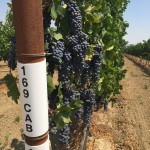
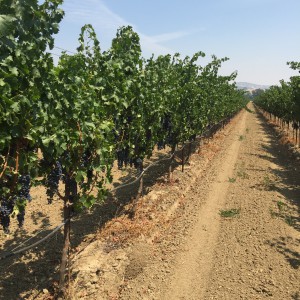
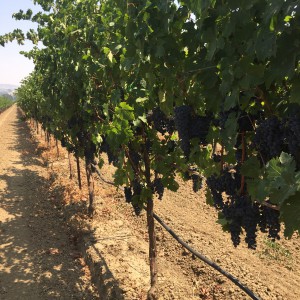
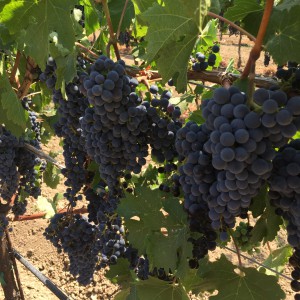
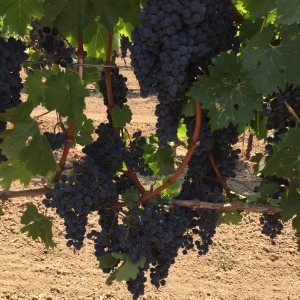
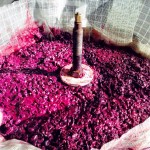






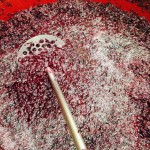


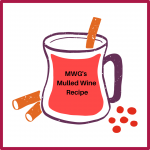
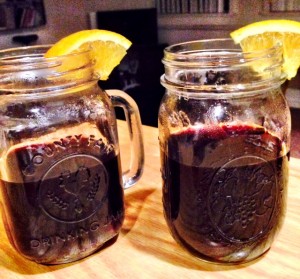
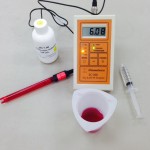
Recent Comments